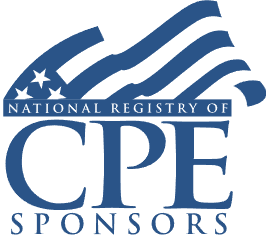State Tax Incentives: Structuring Activities to Take Advantage of Capital Investment, Hiring and Negotiated Credits

Course Details
- smart_display Format
On-Demand
- signal_cellular_alt Difficulty Level
Intermediate
- work Practice Area
Corporate Tax
- event Date
Wednesday, March 23, 2016
- schedule Time
1:00 PM E.T.
- timer Program Length
110 minutes
-
BARBRI is a NASBA CPE sponsor and this 110-minute webinar is accredited for 2.0 CPE credits.
-
Live Online
On Demand
This course will provide tax advisers and corporate tax professionals with a solid working knowledge of the key tax incentives that individual states provide to corporations and business entities to encourage expansion or relocation within the state. The panel will discuss the primary state-level incentive programs, and detail specific planning opportunities for advisers to leverage in obtaining state tax incentives.
Description
As states work to expand their tax base, programs that encourage companies to expand or relocate within a given state have become a competitive arena with the targeted companies being the clear winners. While each state has its own goals and unique ways of encouraging companies towards those goals, three main categories have emerged: statutory credits for hiring of employees and capital investment, negotiated credits based on proposed activity and discretionary credits that are project by project based. Because nearly 50% of available state incentives go unclaimed, tax advisers must keep fully up to date on state tax programs.
States use hiring credits to persuade companies to hire individuals that traditionally face barriers to employment, whether geographic, economic or societal. Capital investment incentives are generally used to encourage companies to place capital investment in service within the state. These incentive programs vary in scope from expansive to targeted and provide significant opportunities for bottom-line tax savings as well as offsetting ROI of capital and operating costs for eligible companies.
Negotiated incentives, also called discretionary incentives, can take the form of tax credits, grants, abatements, low-interest financing, and utility rate reductions, among other forms. As the name suggests, these are negotiated agreements between the state and local governments and the company attempting to receive the incentive. This category, while subject to negotiation, generally requires a substantial combination of both capital investment and hiring activity within the state but can be the most lucrative category.
Listen as our experienced panel of state tax incentive experts provides a thorough exploration of available state tax incentive programs.
Outline
- Hiring credits
- General structure
- Specific program details as an example
- Hot states
- Investment credits
- Hot states
- Negotiated
- Incentive overview
- Types of incentives
- Process of negotiating incentives
- Transferable/Refundable Credits
- Common mistakes
- Case studies
- Hot states/areas of focus
Benefits
The panel will discuss these and other important issues:
- What are the common trends in state tax incentives for new hires?
- How do various states’ negotiated incentive programs work?
- What states are the most active in setting up tax incentive programs?
- Operational and application considerations for participation in state tax incentives
NASBA Details
Learning Objectives
After completing this course, you will be able to identify the most common forms of state tax incentives, how to qualify for common incentive programs, and how to leverage potentially competing state incentives. You will also have a solid understanding of various states’ negotiated incentive programs, and you will know which states are most aggressive in offering incentive programs.
- Field of Study: Taxes
- Level of Knowledge: Intermediate
- Advance Preparation: None
- Teaching Method: Seminar/Lecture
- Delivery Method: Group-Internet (via computer)
- Attendance Monitoring Method: Attendance is monitored electronically via a participant's PIN and through a series of attendance verification prompts displayed throughout the program
- Prerequisite: Basic knowledge of taxation.

Strafford Publications, Inc. is registered with the National Association of State Boards of Accountancy (NASBA) as a sponsor of continuing professional education on the National Registry of CPE Sponsors. State boards of Accountancy have final authority on the acceptance of individual courses for CPE Credits. Complaints regarding registered sponsons may be submitted to NASBA through its website: www.nasbaregistry.org.
Unlimited access to premium CLE courses:
- Annual access
- Available live and on-demand
- Best for attorneys and legal professionals
Unlimited access to premium CPE courses.:
- Annual access
- Available live and on-demand
- Best for CPAs and tax professionals
Unlimited access to premium CLE, CPE, Professional Skills and Practice-Ready courses.:
- Annual access
- Available live and on-demand
- Best for legal, accounting, and tax professionals
Unlimited access to Professional Skills and Practice-Ready courses:
- Annual access
- Available on-demand
- Best for new attorneys
Related Courses

Calculating Foreign Sourced Dividends-Received Deduction After Tax Reform
Available On-Demand

Depreciation and Expensing: New Rules and Limits Under Current Tax Law
Available On-Demand